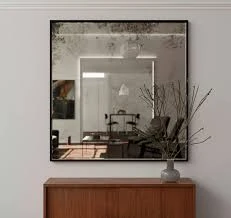

The Impact of Frosted Glass Pricing on Interior Design Trends
Frosted glass, known for its elegant appearance and versatility, has become increasingly popular in interior design over the past several years. This transformation is attributed not only to its aesthetic appeal but also to its functional benefits. However, the price of frosted glass can vary significantly based on factors such as type, thickness, manufacturing processes, and demand. Understanding these elements can help homeowners and designers make informed choices when incorporating frosted glass into their spaces.
Understanding Frosted Glass
Frosted glass is a type of glass that has been treated to produce a translucent surface, allowing light to pass through while providing privacy. It is created through various methods such as sandblasting, acid etching, or applying a frosted film. The resulting appearance is both soft and modern, making it an attractive option for various applications, including windows, shower doors, room dividers, and cabinet doors.
Types of Frosted Glass and Their Pricing
The price of frosted glass can vary depending on the specific type used. For instance, standard glass that has been frosted can be more affordable than specialty glass options, such as tempered or laminated frosted glass, which are designed to provide additional safety and durability. Homeowners may find that while the upfront costs for frosted products can be higher than regular glass, the long-term benefits, such as energy efficiency and reduced glare, can justify the investment.
Additionally, the pricing can vary by thickness. Thicker frosted glass tends to be more expensive due to the increased material costs and the durability it provides. For commercial applications, where durability is paramount, investing in thicker glasses may be necessary, which could add to the overall budget.

Market Demand and Trends
As interior design trends continue to evolve, the demand for frosted glass remains strong. The minimalist aesthetic of modern design has driven many to seek out materials that promote openness and light while providing privacy. The use of frosted glass in offices, luxury homes, and even retail spaces has surged, positively impacting its market price.
Seasonal and regional trends can also affect frosted glass pricing. For instance, during home renovation peaks in spring and summer, prices may rise due to increased demand. Conversely, during economic downturns, there may be a decrease in the desire for luxury finishes, leading to competitive pricing as manufacturers seek to move inventory.
Comparisons to Alternative Materials
When evaluating the cost of frosted glass, it is essential to consider alternatives. Products such as sheer curtains or blinds may offer similar privacy effects but can lack the sleek aesthetic of frosted glass. Moreover, they may require maintenance or replacement over time, while frosted glass is durable and easy to clean. While the initial investment might be higher, frosted glass can be a cost-effective solution in the long run.
Conclusion
The pricing of frosted glass encompasses various factors that are worth considering for anyone looking to enhance their space. Homeowners and designers must weigh the benefits of frosted glass against its costs, while also taking into account market trends and the intended use. As design preferences shift towards more open and light-filled environments, frosted glass is likely to remain a coveted material, making it essential to understand its pricing dynamics. Before making a purchase, exploring multiple suppliers and keeping an eye on market trends can help secure the best deal on this stylish and functional material. Ultimately, whether for home or commercial use, frosted glass is an investment into aesthetics and functionality that pays off in the overall ambiance of a space.